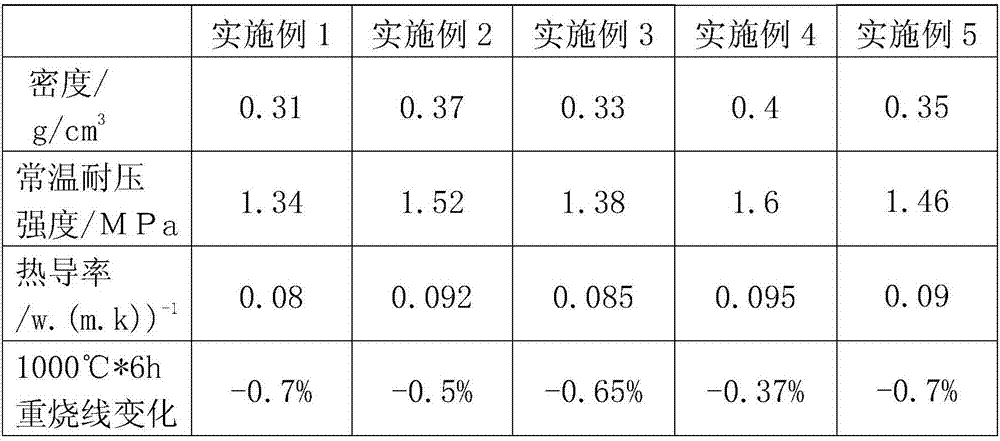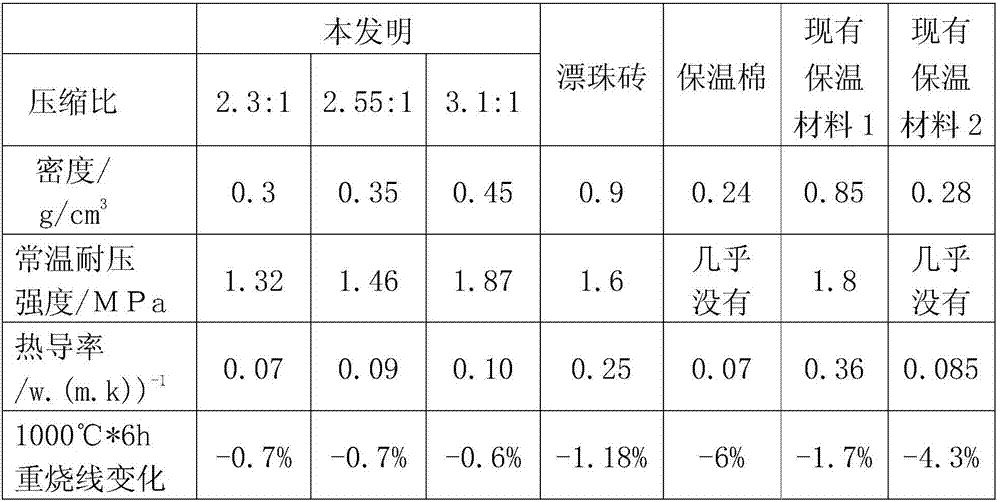Microporous heat-isolating brick
A thermal insulation brick and microporous technology is applied in the field of high temperature kiln insulation materials, which can solve the problems that the use requirements cannot be better met, the refractory cotton has no bearing strength, the density and weight of the insulation bricks are large, and the minimum eutectic point, The effect of reducing the change rate of the reburned line and reducing the transportation cost
- Summary
- Abstract
- Description
- Claims
- Application Information
AI Technical Summary
Problems solved by technology
Method used
Image
Examples
Embodiment 1
[0059] According to the percentage by weight: 60% of modified perlite, 35% of silica sol, and 5% of micropowdered alumina. In the mold making, press molding under a pressure of 10MPa, place the formed insulation brick naturally for 4 hours, and then dry it at 150°C for 24 hours to obtain the finished microporous insulation brick. The performance test results are shown in the table 1.
Embodiment 2
[0061] According to the percentage by weight: 85% of modified perlite, 10% of silica sol, and 5% of micropowdered alumina. In the mold making, press molding under a pressure of 7MPa, place the formed insulation brick naturally for 4 hours, and then dry it at 130°C for 24 hours to obtain the finished microporous insulation brick. The performance test results are shown in the table 1.
Embodiment 3
[0063] According to the percentage by weight: 80% of modified perlite, 19% of silica sol, and 1% of micropowdered alumina. Take three kinds of raw materials, put them into a mixer and stir them evenly, and then put the stirred raw materials into the steel of the hydraulic press. In the mold making, press molding under a pressure of 12MPa, place the formed insulation brick naturally for 5 hours, and then dry it at 120°C for 24 hours to obtain the finished microporous insulation brick. The performance test results are shown in the table 1.
PUM
| Property | Measurement | Unit |
|---|---|---|
| Density | aaaaa | aaaaa |
Abstract
Description
Claims
Application Information
 Login to View More
Login to View More - R&D
- Intellectual Property
- Life Sciences
- Materials
- Tech Scout
- Unparalleled Data Quality
- Higher Quality Content
- 60% Fewer Hallucinations
Browse by: Latest US Patents, China's latest patents, Technical Efficacy Thesaurus, Application Domain, Technology Topic, Popular Technical Reports.
© 2025 PatSnap. All rights reserved.Legal|Privacy policy|Modern Slavery Act Transparency Statement|Sitemap|About US| Contact US: help@patsnap.com


